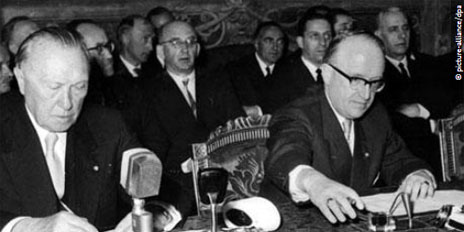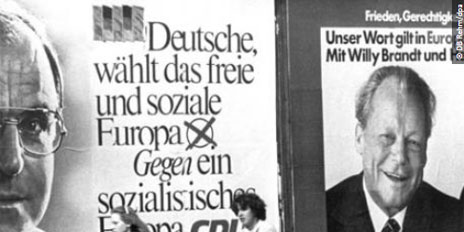Stages of European unification
60 years of European unification form a very special success story. It is a story that has brought durable peace and prosperity to an entire continent, where for centuries almost every nation had waged war against the others.
1957
The European unification process begins. The signing of the Treaties of Rome by Belgium, Germany, France, Italy, Luxembourg, and the Netherlands marks the foundation of the European Economic Community (EEC).

1979
Europeans vote together. The Members of the European Parliament, which sits in Strasbourg and Brussels, are directly elected for the first time. They had previously been delegated by the national parliaments.

1993
Europe’s union becomes tangible for its citizens. In Schengen in Luxembourg, Germany, France and the Benelux countries agree to end internal border controls. Other countries follow.

2002
Europe gives itself a currency. In initially 12 EU member states, the cash euro is introduced; it had served as book money since 1999. The new European Central Bank (ECB) is based in Frankfurt am Main.

2004
On 1 May Estonia, Latvia, Lithuania, Poland, Czech Republic, Slovakia, Slovenia, Hungary, Malta, and Cyprus join the EU. Bulgaria and Romania follow three years later; Croatia in 2013.

2009
The EU presents a united front in the world. With the Treaty of Lisbon, the EU creates the office of the High Representative for Foreign Affairs and Security Policy. A European External Action Service (EEAS) is established.


